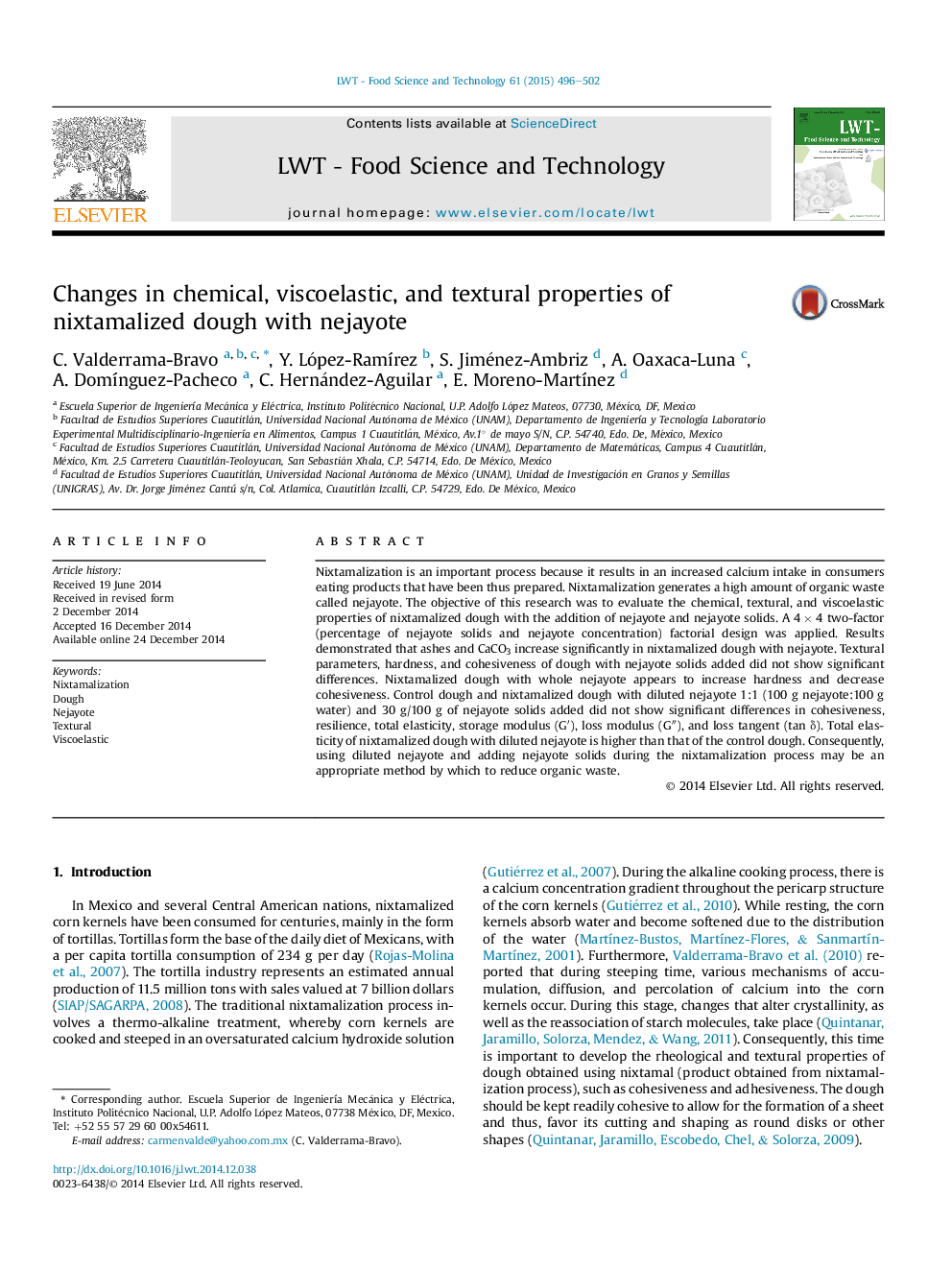| Article ID | Journal | Published Year | Pages | File Type |
|---|---|---|---|---|
| 6401189 | LWT - Food Science and Technology | 2015 | 7 Pages |
â¢Nixtamalized dough with nejayote increases CaCO3 content.â¢Textural parameters are not significantly affected for nixtamalized dough with diluted nejayote.â¢Viscoelastic parameters are similar between control dough and dough with diluted nejayote.â¢Using nejayote during nixtamalization process decreases environment pollution.
Nixtamalization is an important process because it results in an increased calcium intake in consumers eating products that have been thus prepared. Nixtamalization generates a high amount of organic waste called nejayote. The objective of this research was to evaluate the chemical, textural, and viscoelastic properties of nixtamalized dough with the addition of nejayote and nejayote solids. A 4 Ã 4 two-factor (percentage of nejayote solids and nejayote concentration) factorial design was applied. Results demonstrated that ashes and CaCO3 increase significantly in nixtamalized dough with nejayote. Textural parameters, hardness, and cohesiveness of dough with nejayote solids added did not show significant differences. Nixtamalized dough with whole nejayote appears to increase hardness and decrease cohesiveness. Control dough and nixtamalized dough with diluted nejayote 1:1 (100 g nejayote:100 g water) and 30 g/100 g of nejayote solids added did not show significant differences in cohesiveness, resilience, total elasticity, storage modulus (Gâ²), loss modulus (Gâ³), and loss tangent (tan δ). Total elasticity of nixtamalized dough with diluted nejayote is higher than that of the control dough. Consequently, using diluted nejayote and adding nejayote solids during the nixtamalization process may be an appropriate method by which to reduce organic waste.
